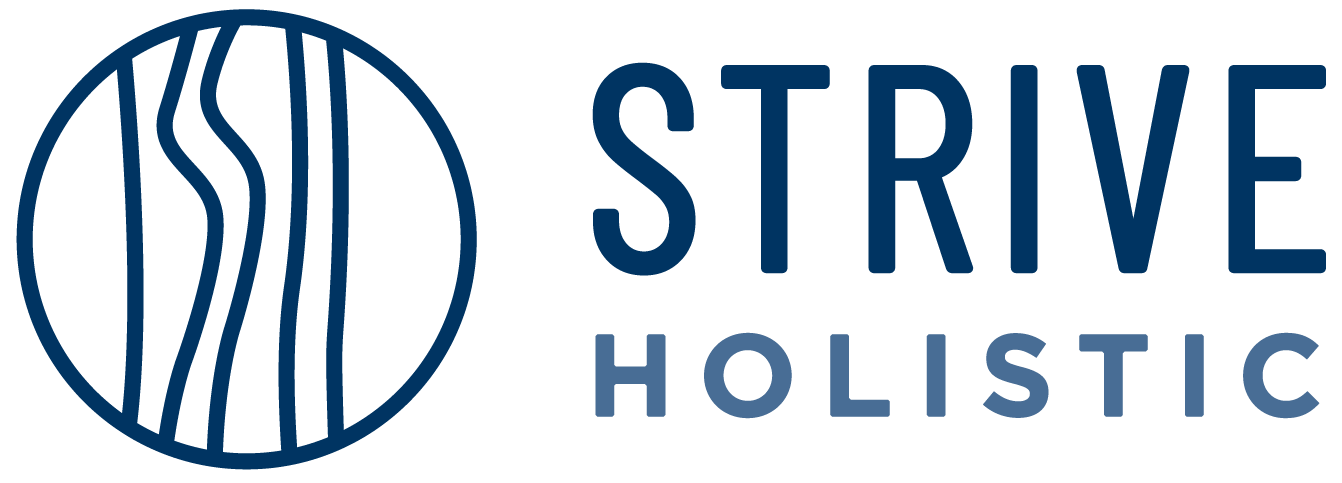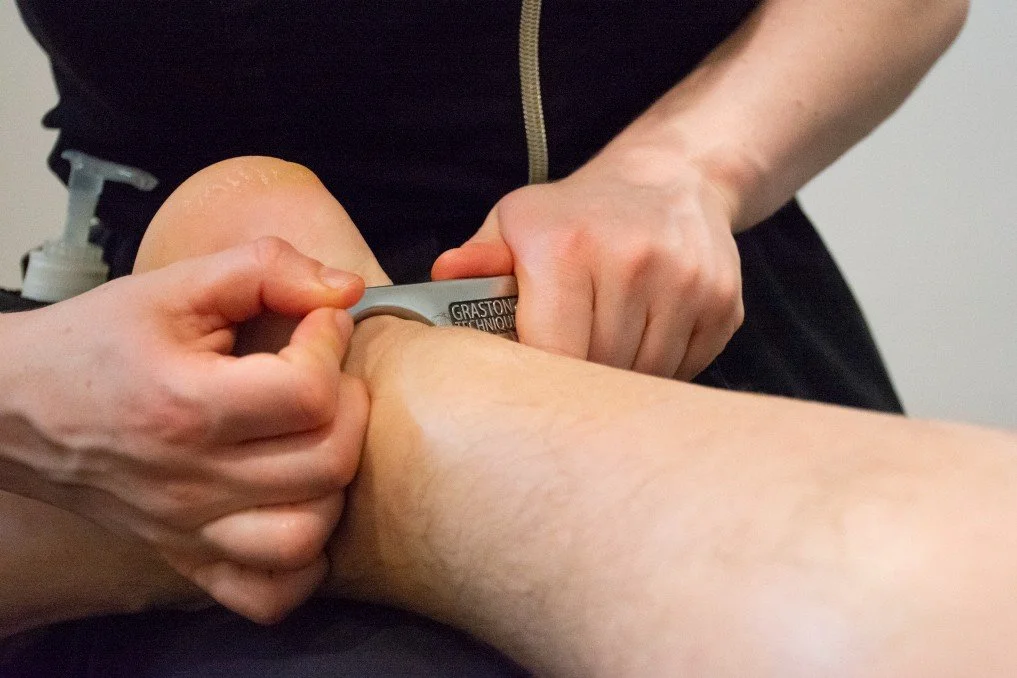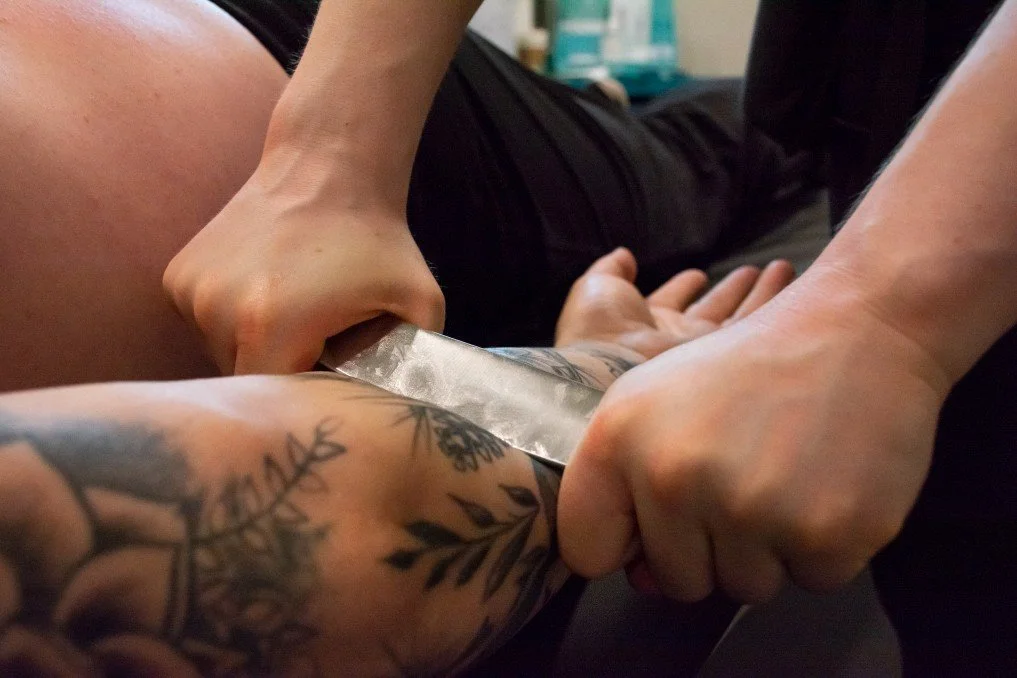Graston Therapy VS. Gua Sha - How Do They Work?
During treatment, clients have asked me, “what’s the difference between gua sha and Graston therapy?” Is there a difference, and if so, what is the difference?
The terms for this “scraping” technique can be known as, IASTM (instrument-assisted soft tissue mobilization) Gua sha, or Graston Therapy. So what is the difference between these techniques, and is there even a difference? In this blog, we'll dive into it.
Gua sha is a traditional Chinese medicine technique that involves scraping the skin with a steel tool to improve circulation and relieve pain. Graston therapy, is a modern form of manual therapy that uses specialized instruments to break down scar tissue and promote healing through a micro inflammatory response, complete with light active movement or active resistance to stimulate collagen production in the tissue to repair the localized area that's been treated with the instrument. The key difference is the client-assisted movement that's applied with the technique while the tool is being used.
There are a variety of Instrument Assisted Soft Tissue Techniques in the world of rehabilitation and musculoskeletal care. The two very popular and different techniques are Gua Sha and Graston. The main idea for both these techniques is to heal the body by intentionally producing micro-traumas in specific regions to bring heat to the area. Although both tools are addressing the body in the in a similar way; they each have a very different approach in the way the tools are made and used.
Gua Sha
Gua Sha is used in Chinese Medicine and all throughout different parts of Southeast Asia. Gua Sha uses a scraping technique on the skin to create the red, bruised marks commonly seen with this treatment. Traditionally, thick oil is used to lubricate the skin before the smooth edge of the instrument is used to create redness and bruising with a variety of long and short strokes. Although this technique is commonly used by many Acupuncturists to compliment their practice, it can be used by massage therapists as well.
With Gua Sha, there is a practice of using this technique commonly in “yang areas” of the body, including the back, neck, shoulders, buttock, and limbs. It is believed that Gua Sha helps with symptoms and prevention of the common cold, flue, asthma, and acute and chronic pain. Gua Sha is also used commonly for respiratory conditions and high fever. By bringing heat to specific areas of the body, Gua Sha releases the excess heat and toxins through the surface.
The different colors have different meanings in the Gua Sha technique: Light red color means deficiency in blood; dark red means the condition is acute; black or purple means there is a long standing condition; brown means there is dryness and a lack of fluids in the body; and dark deep red shows an excess of heat. The stagnation in the blood that presents with these different colours are also present in a technique that's also offered at the Strive Holistic Massage clinic, called myofascial cupping. In our opinion, cupping and Graston (AKA gua sha) are two techniques that compliment one another very well. For more information, book an assessment and treatment with us and make sure to ask your practitioner about the combined benefits of cupping and Graston Therapy (Gua Sha.)
Gua Sha tools are usually made of buffalo horn, water buffalo horn, a piece of jade, a Chinese soup spoon, and many other materials with smooth rounded edges. A study conducted in 2011, tested the effectiveness of Gua Sha in patients with chronic neck pain. The patients of this study had a significant decrease of neck pain in the visual analog scale after 1 week of treatment.
Graston Technique
The Graston Technique was developed by David Graston to break up soft tissue fibrosis and decrease chronic inflammation in specific areas of the body. This technique uses stainless steal tools to create deep, rhythmic pressure in specific areas. The goal of the Graston technique is to break the adhesions formed in and around the muscles to bring inflammation to the area. The inflammation brought to the area will create a healing process that will not only heal the new micro-traumas caused by this technique; but will heal the original damaged tissue that caused the adhesions to form initially. The Graston Technique focuses on mobility and function of the body and removing the restrictions preventing the body from working optimally. In a case study, treatment of subacute lumbar compartment syndrome, using Graston resulted in improved functional testing and a decrease in symptoms.
Conclusion
Both Graston and Gua Sha are based on the inflammatory process bringing heat to the area of treatment and resulting in positive effects in the body. Both techniques use tools made from different materials. Gua Sha has been around for several thousand years in Chinese traditional medicine and is not traditionally known to utilize client initiated movement with this technique type. Graston is a newer, modern technique that emphasizes the importance of the active client movement to promote the stimulation of collagen fibers. Both techniques are effective and have different idealistic histories and beliefs.
Graston is focused more on the breaking up of adhesions and healing through the start of the inflammatory process; whereas Gua Sha is focused on bringing toxins and excessive heat to be released at the surface of the body. Both techniques feel similar, and are effective in promoting healing.
For more information on the Graston (also known as IASTM) Technique, book a treatment with us at our downtown Edmonton massage clinic location today, where we will be happy to discuss it further!


